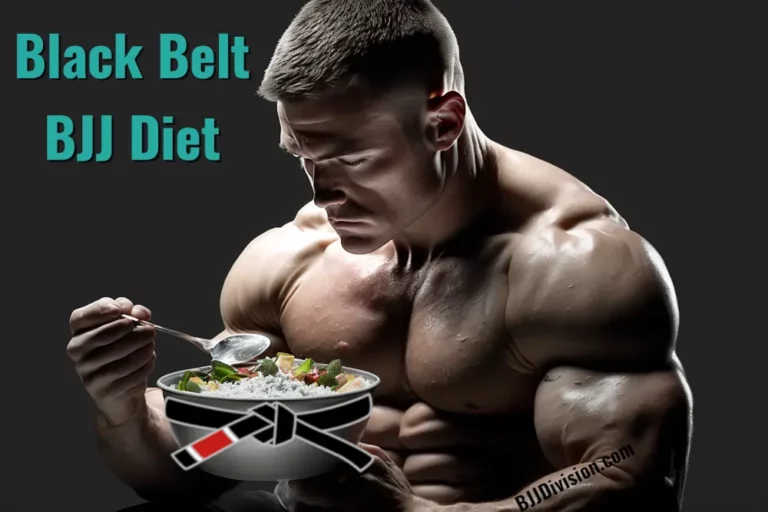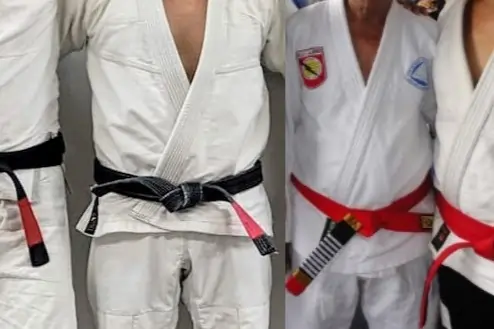BJJ Red Belt: Complete 40+ List and Jiu Jitsu Belt Rankings
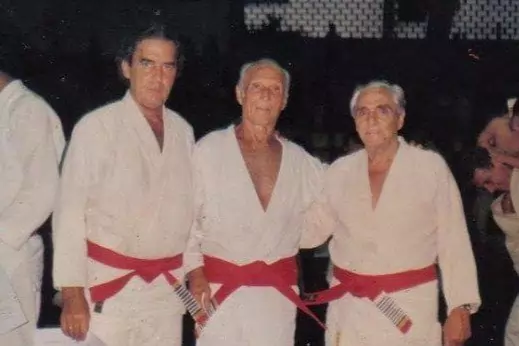
Who wears a BJJ Red Belt?
Why is there a BJJ Red Belt?
How many Jiu Jitsu Red Belts are there?
Brazilian Jiu Jitsu originated from Judo in the early 20th century in Brazil. In 1914 Mitsuyo Maeda left Japan and came to Brazil where he passed on his Judo knowledge to Carlos Gracie and his brothers. The Gracie brothers, especially Helio Gracie, then adopted and refined the art making them the root of what is known as Brazilian Jiu Jitsu today.
As a result, Jiu Jitsu today uses a belt system that is fairly similar to the one used in Judo which also has a Red Belt. You can check out our article Jiu Jitsu vs Judo to dive into a full comparison between the two.
The Red Belt is the last belt in Brazilian Jiu Jitsu’s ranking system and represents a 9th Degree Black Belt. It succeeds the Red/White Coral Belt which therefore is the 8th Degree Black Belt. According to the IBJJF’s graduation system it takes a minimum of 52.5 years of actively training Jiu Jitsu to be considered to earn a BJJ Red Belt. Therefore, wearing a BJJ Red Belt is a great honor and only very few people ever were promoted to this rank.
BJJ Red Belt FAQ
Everything you need to know about the BJJ Red Belt:
BJJ Red Belt in the BJJ Ranking System
The IBJJF (International Brazilian Jiu Jitsu Federation) determines the graduation system that is used all over the world. In BJJ there are only five major belt colors for adults: white, blue, purple, brown and black.
An active BJJ Black Belt keeps earning stripes every few years until he reaches the 7th Degree and becomes a Coral Belt. Check out our complete list of BJJ Coral Belts today.
The BJJ Red Belt is the 9th Degree Black Belt and succeeds the Red/White Coral Belt which is the 8th Degree Black Belt. It is the final belt of Brazilian Jiu Jitsu’s ranking system. Therefore, it takes a minimum of 52.5 years of training Jiu Jitsu to be considered for a promotion to Red Belt according to the IBJJF, while 48 years are spent at Black Belt alone. As a result, the earliest age to expect a BJJ Red Belt is 67 years of age, if the Black Belt is awarded at the age of 19 years.
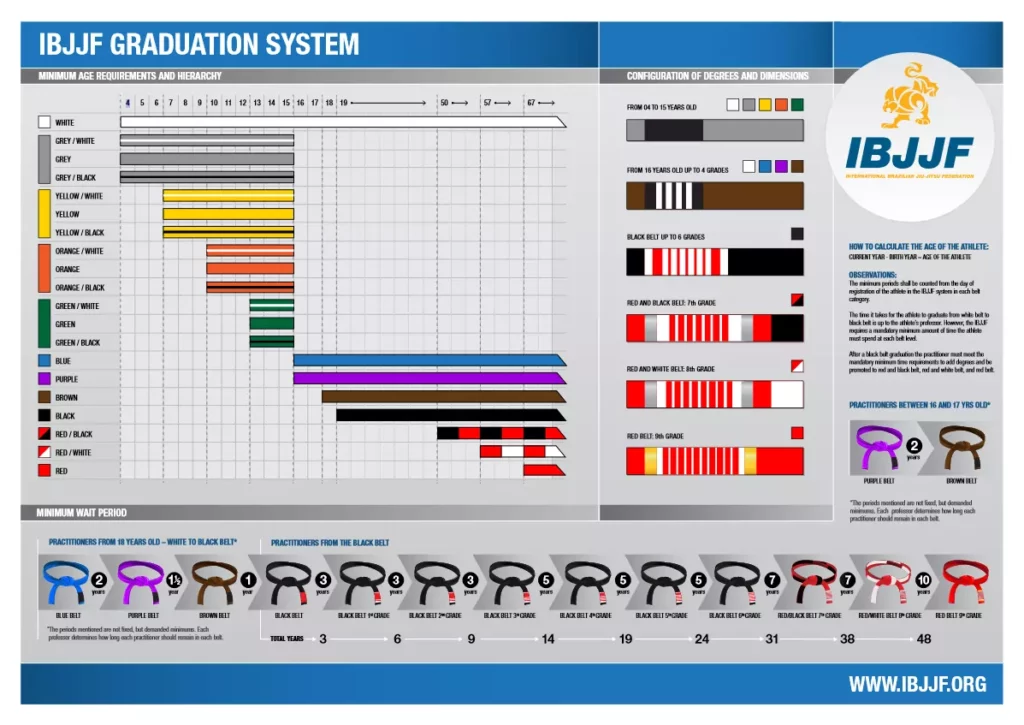
10th Degree Black Belt (Grey Belt)
There is one more belt that is not on the IBJJF’s Graduation System today, because it cannot be achieved anymore. The 10th Degree Black Belt or Grey Belt. This belt was only given to the Gracie brother, as they are the pioneers of Brazilian Jiu Jitsu:
- Carlos Gracie
- Gastão Gracie
- Jorge (George) Gracie
- Hélio Gracie
- Oswaldo Gracie
Carlos Gracie, as he was the oldest of the brothers, learned Judo from Japanese immigrant Mitsuyo Maeda. He passed on his knowledge to his brothers and Jiu Jitsu started to spread from this origin. Hélio Gracie was the only person alive to ever hold a 10th Degree rank in Brazilin Jiu Jitsu. He unfortunately passed away in 2009.
List of BJJ Red Belts today
You have probably never seen a real BJJ Red Belt in your life. Most of us did not, but there are more Red Belts than you might think. Unfortunately, some of them have already passed away. The following list shows most, if not all, of the BJJ Red Belts to this date. It is an updated version of the list found on BJJ Eastern Europe.
- Pedro Hemeterio
- João Alberto Barreto
- Alvaro Barreto
- Flavio Behring
- Carlson Gracie
- Carley Graci
- Geny Rebell
- Armando Wrid
- Oswaldo Fadda
- Pedro Valente
- Wilson Mattos
- Luis Carlos Guedes de Castro
- Francisco Mansur
- Rorion Gracie
- Osvaldo Alves
- Relson Gracie
- Carlos Antonio Rosado
- Renato Paquet
- Francisco Sá
- Robson Gracie (also known as Carlos Robson Gracie)
- Amelio Arruda
- Arthur Virgilio Neto
- Candido Casale “Candoca”
- Crézio Chavez
- Deoclécio Paulo
- Eduardo Gomes Pereira
- Geraldo Flores
- Helio Vigio
- José Higino
- Julio Secco
- Luiz Franca
- Nahum Rabay
- Nilton Pereira da Silva
- Octavio de Almeida
- Oswaldo Carnivalle
- Oswaldo “Paqueta”
- Paulo Mauricio Strauch
- Pedro Emerito
- Walter Nogueira
- Orlando Saraiva
- Rickson Gracie
When reading through the names on the list, it becomes obvious that most Red Belts today are Brazilian. This can be explained through the fact that 52.5 or more years ago Jiu Jitsu was most famous in Brazil. Another few decades from now there will probably be Red Belts from all over the world on this list, which is great for the sport.
Who are the BJJ Red Belts today? The most famous examples
Let’s review some of the most famous BJJ Red belts today a little closer:
Pedro Hemeterio
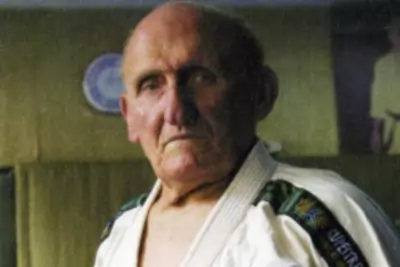
Pedro Hemeterio was the first person, that is not a Gracie relative, to earn a Red Belt in Jiu Jitsu. He originated from the following lineage: Mitsuyo Maeda > Carlos Gracie > Hélio Gracie > Pedro Hemeterio. In the 1940’s and 1950’s he was one of the top competitors in the sport. Unfortunately, he passed away in 2009, just like his teacher Hélio Gracie.
Oswaldo Fadda
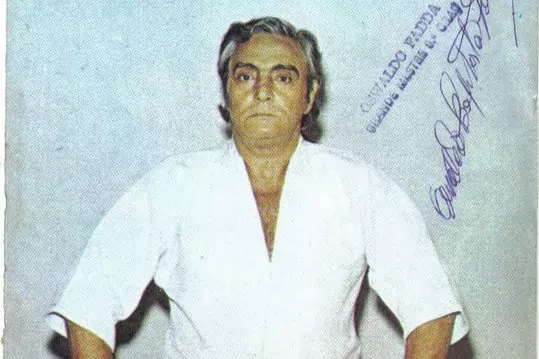
Oswaldo Fadda is one of the most important figures in Jiu Jitsu’s history. He started an alternative Jiu Jitsu lineage that did not include the Gracies. Therefore, he originated from the lineage: Mitsuyo Maeda > Luis França > Oswaldo Fadda.
Rorion Gracie
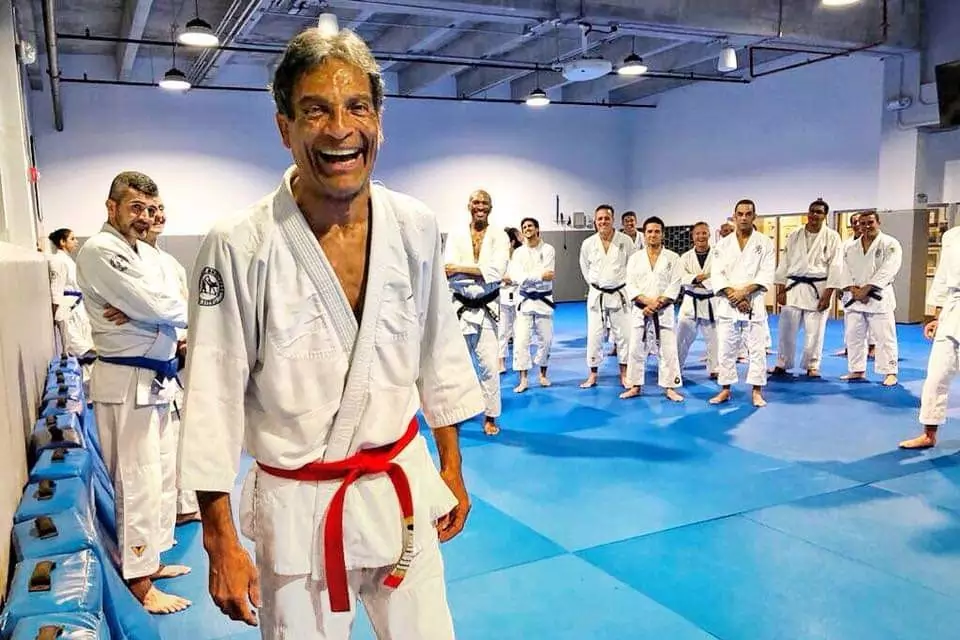
Rorion Gracie is the oldest son of Hélio Gracie a pioneer of Jiu Jitsu. Therefore, he originates from the lineage: Mitsuyo Maeda > Carlos Gracie > Hélio Gracie > Rorion Gracie. He played a big role in making Jiu Jitsu more popular around the world and especially in the USA. Additionally, he is a co-founder of the Ultimate Fighting Championship, which is one of the biggest fighting organizations today.
Relson Gracie
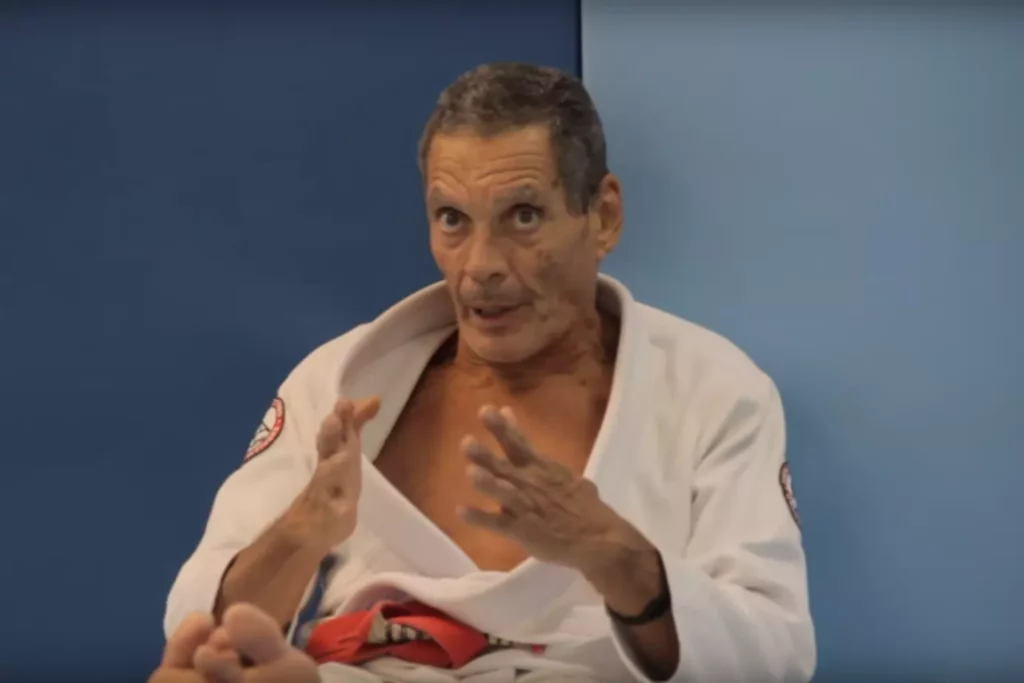
Relson Gracie is the second oldest son of Hélio Gracie and therefore originates from the following lineage: Mitsuyo Maeda > Carlos Gracie > Hélio Gracie > Relson Gracie. He is known for establishing a Jiu Jitsu academy in Hawaii and his passion for surfing, which later spread throughout the Gracie family.
Rickson Gracie
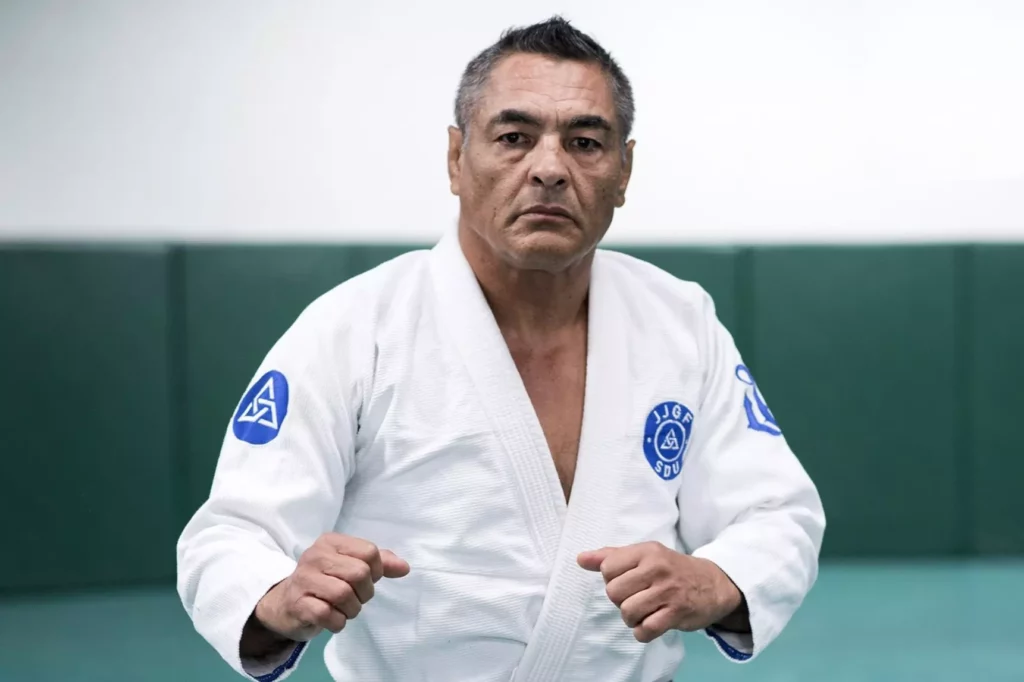
Rickson Gracie is the third oldest son of Hélio Gracie and therefore originates from the following lineage: Mitsuyo Maeda > Carlos Gracie > Hélio Gracie > Rickson Gracie. He is considered the best Jiu Jitsu practitioner/competitor of all time by many great fighters today. Being unbeaten in BJJ competitions, unbeaten in NHB (No Holds Barred) and unbeaten in MMA, he mastered every challenge that arose throughout his years as a competitor. His total fighting record is said to be 400-0, counting all different fighting formats.
When Rickson was promoted to the rank of Red Belt by his brother Rorion in front of the highest-ranking members of the sport, he declined. According to Rickson, it wasn’t time for his promotion since he didn’t spend enough years at his previous belt. Check out how the promotion turned out:
Obviously, we can’t do them all justice in this article. Check out BJJHeroes if you want to explore a few more in depth.
What percentage of BJJ practitioners have a Red Belt in BJJ?
This question is hard to answer exactly since we would have to know the number of BJJ Red Belts today and the number of all BJJ practitioners today.
As of 2022 there seem to be 41, maybe more, BJJ Red Belts in the world. Beltchecker, a registry for BJJ practitioners that shows interesting statistics, has about 24.000 practitioners registered today.
Obviously, the number of practitioners is much higher than that, since only a few people register themselves online. For example, none of the 41 Red Belts are registered on Beltchecker. The real number of BJJ practitioners today is estimated to be about 3.000.000.
As a result, the percentage of BJJ practitioners that have been promoted to Red Belt is 0.0014%.
The number of BJJ Coral Belts, which are the two preceding ranks, is very small as well. Only 0.0026% of all BJJ practitioners have been promoted to Coral Belt. Check out our article about the BJJ Coral Belt to find out more.
Conclusion
With the belts beyond the Black Belt, it is not about skill anymore. The Red Belt in Jiu Jitsu as well as the preceding Coral Belts are a sign of honor and appreciation of your achievements and what you have done for the BJJ community.
Every single Coral Belt or Red Belt today has cemented their place in the BJJ history books. If you should ever arrive at this place of honor, you will surely have devoted your whole life to the sport. So don’t strive for belts, strive for progress and mastery.


